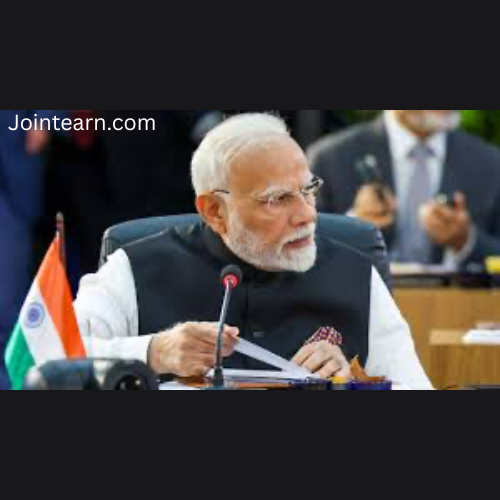
After a hiatus of five years, direct flights between India and China resumed on Sunday, marking a significant milestone in the gradual restoration of ties between Asia’s two most populous nations. The first flight, operated by IndiGo, India’s largest carrier, departed from Kolkata to Guangzhou at 10:00 pm IST (1630 GMT), reestablishing a key people-to-people and business link that had been suspended initially due to the Covid-19 pandemic and subsequently strained by geopolitical tensions following the deadly border clash in 2020.
The resumption of flights comes amid a cautious but steady thaw in bilateral relations. India and China, long-time strategic rivals competing for regional influence, have been gradually seeking avenues to rebuild engagement after years of strained interactions post-Galwan clash. While political and military mistrust persists, both countries appear keen on restoring practical channels of cooperation, particularly in trade, tourism, and cultural exchanges.
Flight Operations and Expansion Plans
The inaugural flight from Kolkata to Guangzhou signals the beginning of renewed direct connectivity. Additional services are expected to begin in the coming weeks, with flights from New Delhi to Shanghai and Guangzhou scheduled to start in November. These new routes are designed to facilitate not only tourism and business travel but also family visits and educational exchanges.
Previously, India-China air travel had relied on indirect routes, often transiting through third countries such as Singapore, Bangkok, or Dubai, increasing travel times and costs significantly. The reinstatement of direct flights is expected to cut transit time considerably, offering a more efficient option for businesspeople, students, and families with cross-border ties.
Symbolic and Economic Significance
For residents of Kolkata, a historic eastern port city with deep-rooted ties to China, the resumption of flights carries both symbolic and practical significance. Kolkata has long hosted a Chinese community dating back to the British colonial era, when Chinese migrants settled in the city as traders and artisans. The reestablishment of direct air connectivity is expected to revive tourism, enhance trade, and facilitate cultural exchange between the two regions.
From an economic standpoint, the renewed flight routes are poised to have a tangible impact on bilateral trade. India’s imports from China have rebounded sharply, exceeding $11 billion last month—a 16 percent increase compared to the same period in 2023, according to India’s commerce ministry. Exports from India to China, though smaller in comparison, also recorded robust growth, totaling $1.47 billion and representing a 34 percent year-on-year increase. Business leaders have emphasised that reduced logistics costs and faster transit times could further accelerate trade flows, making these direct flights an important enabler of commerce.
Rajeev Singh, head of the Indian Chamber of Commerce in Kolkata, highlighted the benefits to businesses, telling AFP, “The direct air link will reduce logistics and transit time. It will be beneficial for companies trading goods, as well as for tourists and families visiting relatives in both countries.”
People-to-People Engagement
Beyond trade, the flights carry significance for people-to-people contact, which is increasingly recognised as a vital component of diplomatic relations. The Indian government described the flight resumption as a step to facilitate “people-to-people contact” and aid the “gradual normalisation of bilateral exchanges.”
Such exchanges have already shown small but meaningful signs of goodwill. This month, during the Diwali festival, soldiers from both sides of the contested India-China frontier exchanged sweets, a symbolic gesture of mutual respect despite ongoing disputes. These gestures, while modest, reflect an underlying desire to stabilise relations and maintain communication channels even amid strategic rivalry.
Strategic Context
The resumption of direct flights must also be viewed within the broader geopolitical context. India and China continue to compete for influence in South and Southeast Asia, and tensions along the Line of Actual Control (LAC) remain unresolved. However, both countries appear to recognise the need for practical cooperation in trade, connectivity, and transport, despite lingering military and political mistrust.
Meanwhile, India’s relations with other major powers, particularly the United States, have faced recent challenges, with trade tensions and tariffs complicating commercial ties. Strengthening economic and transportation links with China offers an alternative avenue to enhance trade and mitigate external pressures.
Looking Ahead
The resumption of flights is not merely a logistical development—it represents a broader attempt to rebuild trust and re-establish routine interactions between India and China. Analysts note that restoring travel connectivity is a precursor to deepening trade ties, encouraging educational exchanges, and fostering tourism, all of which can gradually reinforce confidence in bilateral relations.
The immediate focus is on ensuring smooth operations of the new flight routes and managing regulatory, visa, and customs protocols efficiently. In the longer term, sustained engagement through air connectivity could pave the way for broader collaboration in areas such as trade agreements, cultural exchanges, and regional cooperation on economic development.
Public and Commercial Response
In Kolkata, the announcement has been met with optimism from local residents and businesses. Travel agencies have reported an uptick in inquiries about flights to China, while traders are evaluating options for faster cargo movement. Cultural organisations are also exploring opportunities to host events and exhibitions, leveraging the restored connectivity to revive historical and familial ties between the two nations.
The revival of direct air routes, coming after five years of suspension, serves as a reminder that pragmatic cooperation can coexist with strategic competition. By facilitating travel for business, education, and personal reasons, the flights help create channels of understanding and interaction that can complement diplomatic dialogue at higher levels.
Conclusion
India’s resumption of direct flights to China marks a noteworthy step in the gradual normalisation of bilateral ties following years of strain. It is significant not only for commerce, tourism, and cultural exchange but also for signalling a cautious easing of political tensions. As flights commence from Kolkata to Guangzhou and new routes from New Delhi to Shanghai and Guangzhou come online in November, both nations are expected to benefit from enhanced connectivity, increased trade, and strengthened people-to-people engagement.
While strategic rivalry and border disputes persist, the resumption of direct flights demonstrates that practical cooperation in transport and commerce can continue, even amid a complex and sometimes tense geopolitical relationship. Analysts suggest that sustained engagement, starting with connectivity and trade, could lay the groundwork for more stable and predictable interactions between India and China in the years ahead.


Leave a Reply